Guest blog by Kerri Moore
With the advent and extent of social media marketing, nonprofit organizations are able to spread the word about their fundraising events farther and wider than ever before.
Year over year, fundraising events have increased the revenue of nonprofits across the board— smaller nonprofits especially.
It’s no coincidence. Social media has opened up the doors and allowed nonprofits to pull off grander and more impactful fundraising events, simply because marketing has become more streamlined.
A nonprofit professional (like yourself) can create a Facebook event from scratch, and with the right maneuvering, you can generate thousands of responses within a few days. (How incredible is that?)
All of that being said, the legwork and steps behind fundraising events have remained largely the same for as long as these events have been around.
The 8 steps to creating and executing your perfect nonprofit fundraising event are listed below (and we’ll go into more detail throughout this guide):
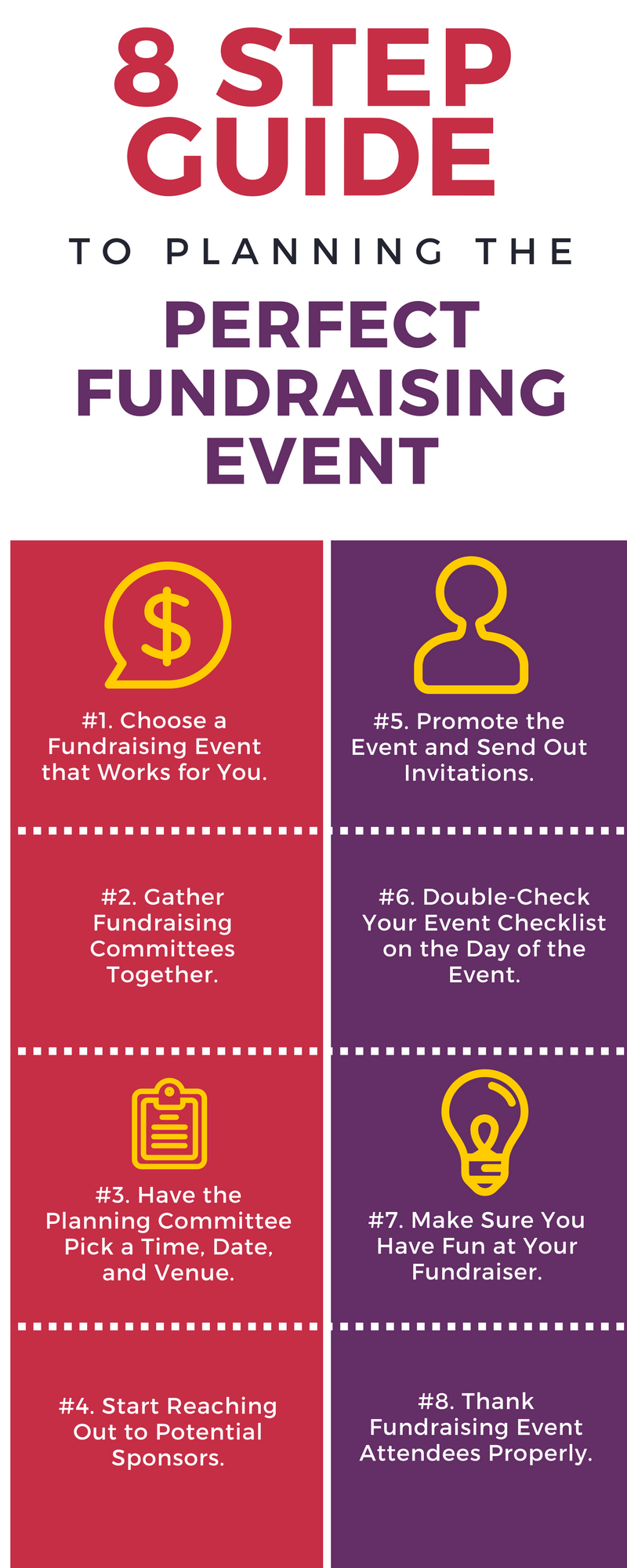
#1. Choose a Fundraising Event that Works for You.
#2. Gather Fundraising Committees Together.
#3. Have the Planning Committee Pick a Time, Date, and Venue.
#4. Start Reaching Out to Potential Sponsors.
#5. Promote the Event and Send Out Invitations.
#6. Double-Check Your Event Checklist on the Day of the Event.
#7. Make Sure You Have Fun at Your Fundraiser.
#8. Thank Fundraising Event Attendees Properly.
Curious about everything that goes into an event— before, during, and after? Be sure to check out Booster’s Ultimate Guide to Planning a Fundraising Event.
Are you ready to read all about pulling off a successful event? Let’s get to it!
#1. Choose a Fundraising Event that Works for You.
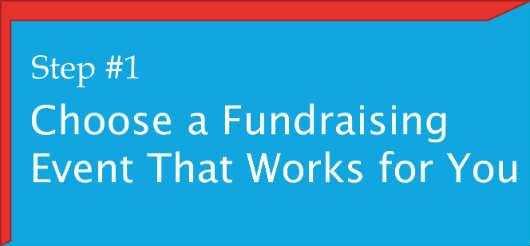
This step might be the hardest of them all: choosing just one event and picking a fundraiser that will define your organization and (hopefully) propel it to the next level!
That’s a lot of pressure to put on one day (or night).
So how do you choose?
What it all comes down to is this:
- What is your budget?
- What is your timeline?
- Who is your audience?
- What are your goals?
At the intersection of those four questions lies your answer.
Let’s break it down with an example.
- Say that you have a fairly large budget.
- You’ve got at least 7 months to spare because you’re looking at a holiday fundraiser (since you know that the end of the year is the best time for charitable giving).
- Your audience primarily consists of college-educated people between the ages of 45 and 60.
- You have pretty lofty goals, but you think they’re attainable with the right event.
With all of those factors in mind, it seems like you could pull off just about anything. But your audience and your goals would be best served by something like a low-key gala or a delightful charity auction. (Need some tips for running a charity auction in particular? Take a peek at this article: www.bidpal.com/charity-auction/).
Are you ready for the next step? Here’s how you’ll know: You’ve landed on an event that works for your budget, goals, audience, and timeline.
You’re officially ready to start rallying the troops!
#2. Gather Fundraising Committees Together.
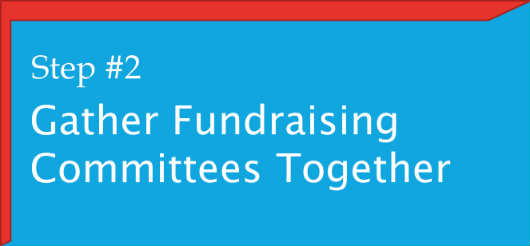
If there’s just one key ingredient that makes a fundraising event successful, it would have to be the people behind it.
They’re the ones who are toiling away behind the scenes, making the effort to spread the word, and most importantly: planning and executing the event itself.
So who and what, exactly, are the fundraising committees?
When do they gather?
And who gathers them?
First of all, there are two main committees— the planning committee and the event (or host) committee. The third essential group is comprised of staff and volunteers who help out throughout the process.
Let’s go a little more in-depth with each group:
#1. Planning Committee
Who are they: They’re typically staff members and some board members who are actively involved.
What do they do: The planning committee does just that: they plan. From beginning to end, they’re the ones who make all of the major and minor decisions with regard to the event.
When do they get involved: They’re involved from day one.
#2. Event/Host Committee
Who are they: Typically, the event or host committee consists of well-connected board members and volunteers. You want people on this team to be able to reach out to as many donors and sponsors as possible — people who are well versed in peer-to-peer fundraising.
What do they do: The event/host committee does the bulk of the fundraising and awareness-raising work. They also often secure sponsorships and sell tickets to events.
When do they get involved: As soon as the details of the event are finalized, the event or host committee will get to work, raising funds and securing sponsors.
#3. Staff and Volunteers
Who are they: Event volunteers come in all shapes and sizes. As long as they’re dedicated to helping your organization pull off a fundraiser, they should be a part of your event staff and volunteer team.
What do they do: You name it, and the event staff and volunteers probably do it. They’re actively involved with just about every aspect of the fundraising event process.
When do they get involved: Make no mistake about it, staff and volunteers are involved from the beginning until the end. Although, not every volunteer needs to be a part of every step, and not every staff member needs to sign off on every decision.
Of course, there may be some overlap within each of these teams, and that’s 100% okay.
Are you ready for the next step? Here’s how you’ll know: You have a solid planning committee, an event/host committee, and you’ve got staff and volunteers on board.
You’re ready to go!
#3. Have the Planning Committee Pick a Time, Date, and Venue.
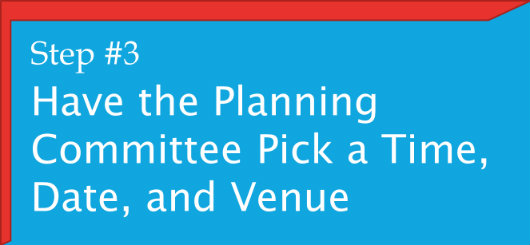
This next step in the process revolves around the essential details of the fundraiser.
When and where will the event take place?
It might seem like a straightforward question, but it can get infinitely more complicated when you consider all of the factors that go into making these decisions.
One factor might be: the fact that most venues charge significantly more money for weekend events, but most of your donors are likely free on the weekend.
The way to mitigate circumstances like that is to decide first where you can afford to compromise.
Could your planning committee be more flexible with your dates if it meant saving a considerable amount of money on a venue?
Or would they be willing to expand the budget if the right place opened up?
The key is to have a good idea of where you’re willing to be flexible beforehand.
You’ll also want the planning committee to decide if the date takes precedence — meaning that they’ll decide on the time and date before they start looking for an event space.
Alternatively, they could have their hearts set on a venue and come to the potential event spaces with several different times and dates in mind.
In either case, it’s important to have a strategy in place before settling on any details.
Are you ready for the next step? Here’s how you’ll know: You have a time, date, and place secured, even if you’ve had to compromise.
#4. Start Reaching Out to Potential Sponsors.
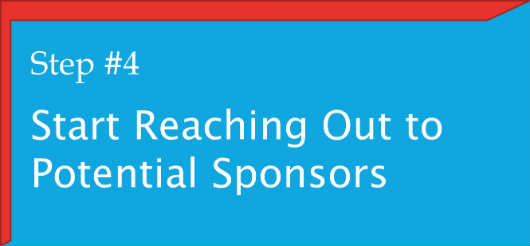
Sponsorships, while they may seem charitable, are actually more akin to business deals.
Your nonprofit organization needs funding and support.
A local business has excess capital, and they want marketing exposure to your organization’s donors.
It’s almost a no-brainer — and it’s definitely a win-win scenario.
The trick is in finding that perfect partnership, where both sides leave feeling like they’ve come away with the best deal.
How do you find your organization’s ideal match?
Just as you can use prospect research to find major gift donors, you can also employ similar tactics to discover potential sponsors.
Be on the lookout for common characteristics in sponsorship prospects, such as:
- Past sponsorships of similar events or organizations,
- Proof of philanthropic interest, such as past donations,
- Marketing objectives that line up with what you can offer,
- And, of course, the ability to sponsor a fundraising event.
If you find at least one business that meets those stipulations, then you should have no issue in securing a sponsorship.
Once you’ve found some viable candidates, it’s time to put in the work of researching their marketing goals and objectives.
Figure out what it is that they want and what you can feasibly offer them.
Perhaps you have the demographic that they’re trying to tap into.
Or maybe you just have an exceptionally positive reputation, and they’d benefit simply from that association.
It’s also entirely possible that the business has corporate philanthropy interests that line up with your nonprofit’s cause.
If it’s exposure they’re after, you could offer them concrete advertisements, like banner spots at the event itself or a logo on the back of your fundraising T-shirt.
Whatever the case may be, it’s important to strike a deal that works well for both parties involved.
Are you ready for the next step? Here’s how you’ll know: You’ve struck a deal with at least one sponsor, and you’ll have enough funding to begin promoting your event.
#5. Promote the Event and Send Out Invitations.
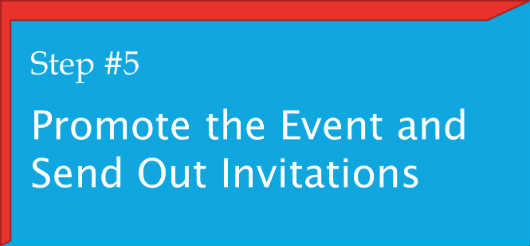
Logically, the next step in pulling off a fundraising event is to get the word out to people that it’s happening.
That means not only sending out invitations to your existing donor base, but also reaching out to potential new donors through promotional materials.
In fact, there are several ways to get the word out about an upcoming event. For instance, your organization can:
- Make T-shirts and other promo materials,
- Create a Facebook event and share it,
- Set up a crowdfunding page with info,
- Pull out an ad in a local newspaper,
- Plug the event on a radio station,
- Buy a bus stop advertisement,
- Pass out flyers and posters,
- And so much more!
When it comes to things like creating a Facebook event or a crowdfunding page, there are simple tips and tricks all over the web (and specifically on this site) to help you get off on the right foot.
Social media marketing, as you know since you’ve landed on this site, is one of the most powerful promotional tools at a nonprofit’s disposal.
But that doesn’t mean you shouldn’t consider other, more traditional routes of marketing.
If you’re looking to raise a little extra money while you’re promoting your next event, then I’d suggest you take a look at Booster’s product fundraising ideas for some inspiration.
Regardless of the route you choose, it’s important to keep in mind that both invitations and promotions should be sent out and launched at least 6 weeks in advance of the event.
Are you ready for the next step? Here’s how you’ll know: Promoting an event doesn’t really stop until the day of the event, so you should move on to the next step when you’ve sent out all of your invites and done all you can to get the word out about your event.
#6. Double-Check Your Event Checklist on the Day of the Event.
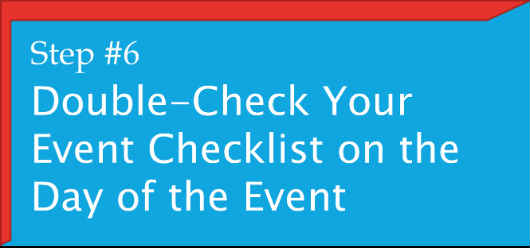
It’s that time! Time to conduct a quick practice run of your event before it actually happens, that is!
On the day (or night) of your fundraiser, one of the most important things you can do to make sure that it goes off without a hitch is to practice at least once.
Do a quick mic-check.
Have speakers run through their talking points a few times.
Test out plausible scenarios, like attendees getting lost or not knowing where to park.
Make sure that everyone knows their stations and is aware of what to do and when to do it.
Before you run through everything, it’s important to take a moment to create a checklist for yourself.
Include every element and facet of your fundraising event that needs checking — from the sound system to the seating charts and more.
As you’re running through each of the parts of your event, you should also be making notes of areas to improve.
Put out fires as soon as you notice them, and if something isn’t immediately fixable, be sure to note it for next year’s event.
Are you ready for the next step? Here’s how you’ll know: You’ve conducted a practice run-through of your event (at least once), and you’ve fixed every glitch you’re able to.
#7. Make Sure You Have Fun at Your Fundraiser.
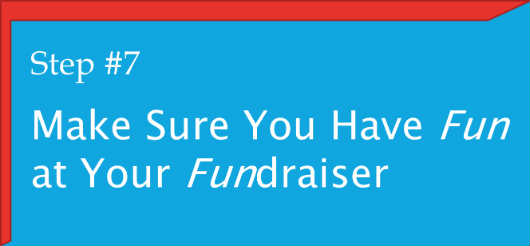
Live fundraising events are ideal for raising a significant amount of money in a short amount of time.
But you can’t raise that capital if you’re not engaging with your donors.
It might seem a little counter-intuitive to let loose at your fundraiser.
But the truth is: if your donors see you having fun, they’ll be far more likely to have a great time themselves.
And people who are having fun are markedly more inclined to donate.
If your event’s attendees see you laughing, talking passionately about your cause, and participating in the activities, they’ll come away with the idea that the event was generally a success — that everyone had a great time.
However, if you sulk in a corner, visibly stressed out by every little thing that might go wrong, you can bet that your attendees will make a note of it.
They’ll leave thinking, “Maybe that nonprofit doesn’t know what they’re doing.”
That’s why it’s crucial to remain engaged in the moment and let go of everything you can’t control.
To further engage with attendees and donors, you can livestream your event. Show everyone who couldn’t make it just how much fun they could have next year!
Are you ready for the next step? Here’s how you’ll know: Did you shake it all off and focus on the present? Good! You’ve successfully made it to the last step.
#8. Thank Fundraising Event Attendees Properly
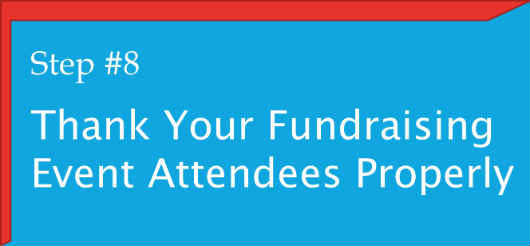
When you were younger, you were probably taught that it’s polite to say, “Thank you.”
Well, in the nonprofit industry, it’s more than polite; it’s vital to success.
52% of people have cited leaving a nonprofit or discontinuing support due to a lack of stewardship.
They’ve either not been thanked, or the nonprofit they supported didn’t let them know how their donations made an impact.
There’s a relatively easy fix. All it takes is following up.
The only problem is deciding when and how to thank them.
Half of all donors believe that personalization of acknowledgments is more important than how soon they receive a thank you.
The other half, obviously, would like to be thanked as soon after they make a donation as possible.
The general rule is to thank donors within 48 hours of an event or donation.
But that doesn’t leave much time for a heartfelt thanks.
That’s why it’s perfectly acceptable to thank your donors more than once.
Send out a quick thank-you email or text right after the event or donation and follow up with a more personalized letter or phone call to let your donors know how much they mean to you.
Their philanthropy is about more than just giving money; it’s about a passion for your cause.
Demonstrate that their contributions are meaningful to you by thanking them more than once and following up with specifics about how their donations made a concrete difference.
Congratulations! You’ve officially finished planning and pulling off a perfect fundraising event (or at the very least, you’ve finished reading about it!).
One final takeaway: There’s no such thing as a truly perfect fundraising event. But, if you find that you raised more money than you spent, and you and your attendees had fun while doing so, then that’s pretty close to perfect.
Fundraising events are about two things, really, in the end:
- Raising money,
- And building relationships.
If you can say that you achieved those two objectives, you’re 100% successful. And that’s what really matters, right?
About the author: Kerri Moore is the Director of Marketing at Booster, Created by CustomInk. She and her team help create content aimed at maximizing organizers’ fundraising potential and furthering their mission to raise awareness for the cause or passion that means the most to them.
Comments 2
Creating event in facebook is the easiest and hassle free. We can easily tag our friends that we want to part of the said event. Facebook event can also be useful in online marketing strategy. Thanks!!!
Author
That’s great!